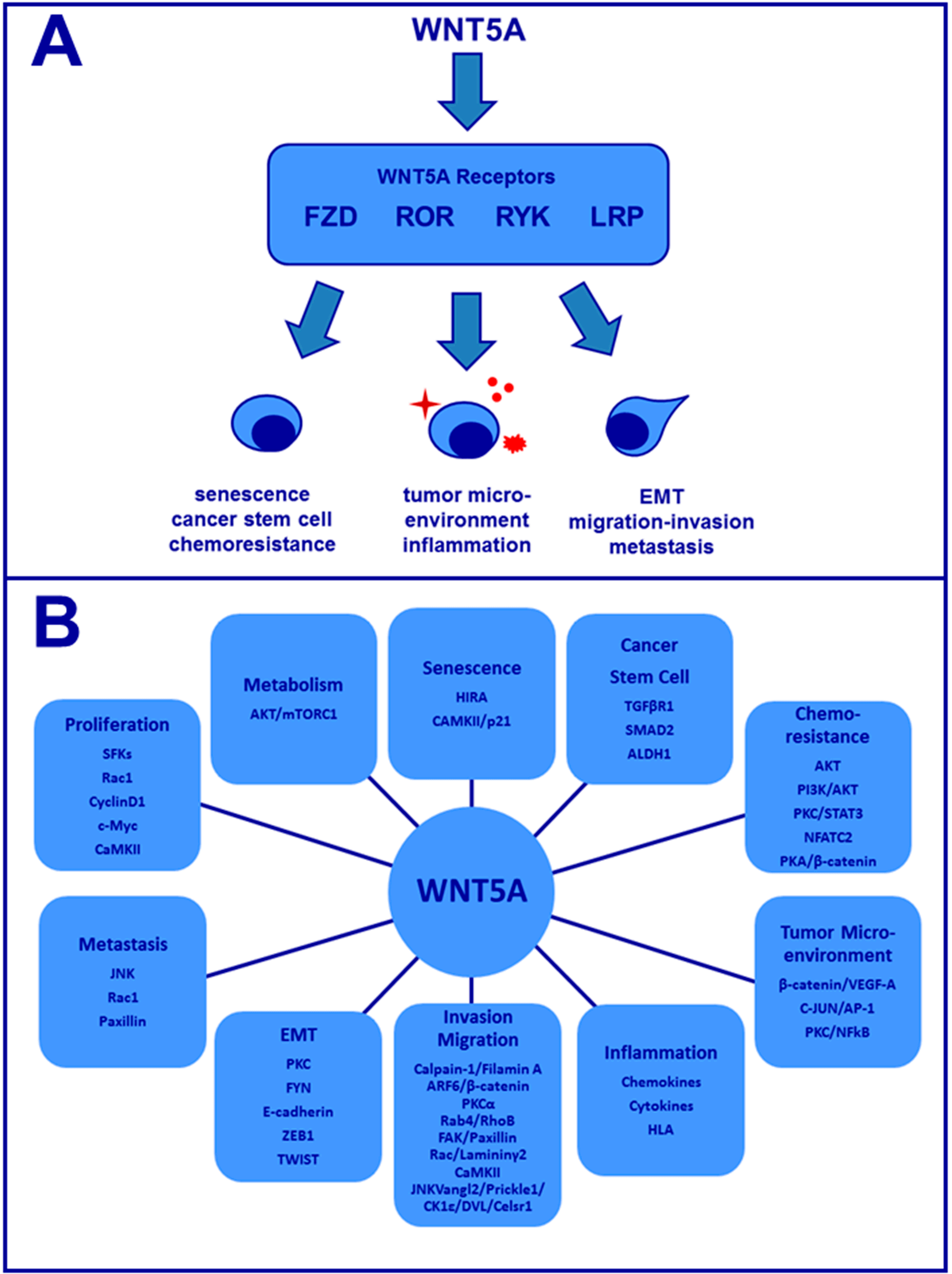
Our promise to you:
Guaranteed product quality, expert customer support.
 24x7 CUSTOMER SERVICE
24x7 CUSTOMER SERVICE
 CONTACT US TO ORDER
CONTACT US TO ORDER
WNT5A Gene Editing 
Wingless (WNT) genes code for a family of secreted, lipid-modified glycoproteins that play a critical role in normal cellular processes (i.e. cell proliferation, migration, and differentiation). Wnt proteins are also known to affect diverse developmental processes like embryonic patterning, cell fate specification and generation of cell polarity in a variety of organisms. Wnt5a, a member of the non-canonical Wnt family of proteins, has been shown to play diverse roles during normal regulatory processes. It has been reported that the WNT5a gene encodes two isoforms using alternative exons 1A and 1B and that transcription is based on multiple mechanisms such as NF-kB, TGFb, NOTCH and Hedgehog signaling. Wnt5a, like other Wnts, requires two important post-translational modifications to be fully functional. In the last decade, numerous studies have pointed to an important role of Wnt5a in a variety of inflammatory disorders such as rheumatoid arthritis, tuberculosis, atherosclerosis and sepsis.
Wnt5a and Its Signaling Pathways
As a representative of the non-canonical Wnt proteins, Wnt5a is related to a variety of cellular functions by activating multiple signaling pathways. A large number of studies have demonstrated that Wnt5a could mediate a variety of cellular and extracellular functions by binding with its receptor FZD1-8, which can activate both canonical and non-canonical Wnt signaling. In addition to FZDs, Wnt5a can also activate c-Jun N-terminal Kinase (JNK) and transforming growth factor-β (TGF-β) signaling by binding to Ror2 receptor. Besides, Ror2 in combination with FZD forms a complex to mediate Wnt5a signaling. Wnt5a also binds to an adhesion molecule CD146 to recruit Dishevelled 2, then forms a complex and activates JNK signaling. Wnt5a in non-canonical signaling pathways has been best characterized by the Wnt5a/PCP and Wnt5a/Ca2+ pathways. The Wnt5a/Ca2+ signaling pathway activates the expressions of downstream proteins, including Ca2+/calmodulin-dependent protein kinase II (CaMKII), protein kinase C, and NFAT, and thus regulates cellular processes, such as actin cytoskeleton remodeling and cell motility. In addition, the Wnt5a/PCP pathway is mediated by RhoA (Ras homolog gene family, member A) by signaling or by activating JNKs by small Rho-GTPases and leads to polarized cell morphology and migration within tissues.
Wnt5a and Cancer
Wnt5a has been involved in organism development and tissue homeostasis during embryonic formation, and it is also implicated in the development of many diseases. Wnt5a can regulate the proliferation of progenitor cells. At the same time, Wnt5a is required for endothelial differentiation of embryonic stem cells and the embryonic vascular growth through Wnt5a/β-catenin signal pathway. Low or loss of expression of Wnt5a has been closely related to increased metastatic and invasive phenotype in several kinds of cancers, including colorectal cancers, thyroid cancer, breast cancer, melanoma, ovarian cancer, nasopharyngeal carcinoma, gastric cancer, and so on.
 Figure 1. Overview of Wnt5a signaling in cancer. (Asem M S, et al., 2016)
Figure 1. Overview of Wnt5a signaling in cancer. (Asem M S, et al., 2016)
In cervical cancer, Wnt5a plays a role in promoting cancer and can enhance the proliferation and invasion of tumor cells. In chronic lymphocytic leukemia, researchers found that Wnt5a can increase tumor cell proliferation and migration. In classic Hodgkin lymphoma, Wnt5a enhances tumor metastasis. Wnt5a is a tumor suppressor gene in colon cancer and esophageal cancer, yet in gastric cancer, it promotes invasion and metastasis. Wnt5a is also an oncogene in several other cancers, including glioblastoma, liver cancer, kidney renal clear cell carcinoma, nasopharyngeal carcinoma, non-small-cell lung cancer, melanoma, pancreatic cancer, and osteosarcoma. Mikels and Nusse have found out that signaling initiated by Wnt5 is regulated by receptor availability instead of Wnt5a itself, which may produce completely different biological roles even in the same type of cancer.
WNT5A Gene Editing Services
CRISPR/Cas9 PlatformCB, one of the leading biotechnological companies specializing in gene editing, is dedicated to offering comprehensive CRISPR/Cas9 gene-editing services to a wide range of genomics researchers. Based on our platform, we can help you effectively WNT5A gene deleted, inserted or point mutated in cells or animals by CRISPR/Cas9 technology.
- WNT5A Gene Knockout: We offer WNT5A gene knockout cell line and knockout animal model generation service with high quality. Typically, we develop CRISPR-mediated gene editing cell lines including HEK239T, Hela, HepG2, U87, but we can use other cell lines according to your requirements. Our one-stop KO animal model generation service covers from sgRNA design and construction, pronuclear microinjection to Founders genotyping and breeding.
- WNT5A Gene Knockin: CRISPR/Cas9 PlatformCB provides the one-stop WNT5A knock-in cell line and knockout animal model generation services, including point mutation and gene insertion. Our expert staff has succeeded in dozens of WNT5A knock-in cell line generation projects, including stem cells, tumor cells and even difficult-to-handle cells. We also have extensive experience in incorporating CRISPR/Cas9 technology into animal models, which have been fully recognized by our clients.
If you have any questions, please feel free to contact us.
Related Products at CRISPR/Cas9 PlatformCB
| CATALOG NO. | PRODUCT NAME | PRODUCT TYPE | INQUIRY |
| CDKM-0588 | B6J-Wnt5aem1Cflox | Knockout Mouse | Inquiry |
References
- Endo M, Nishita M, Fujii M, et al. Insight into the role of Wnt5a-induced signaling in normal and cancer cells. International review of cell and molecular biology, 2015, 314: 117-148.
- Bhatt P M, Malgor R. Wnt5a: a player in the pathogenesis of atherosclerosis and other inflammatory disorders. Atherosclerosis, 2014, 237(1): 155-162.
- Shi Y N, et al. Wnt5a and its signaling pathway in angiogenesis. Clinica Chimica Acta, 2017, 471: 263-269.
- Prasad C P, et al. WNT5A as a therapeutic target in breast cancer. Cancer and Metastasis Reviews, 2018, 37(4): 767-778.
- Asem M S, et al. Wnt5a signaling in cancer. Cancers, 2016, 8(9): 79.